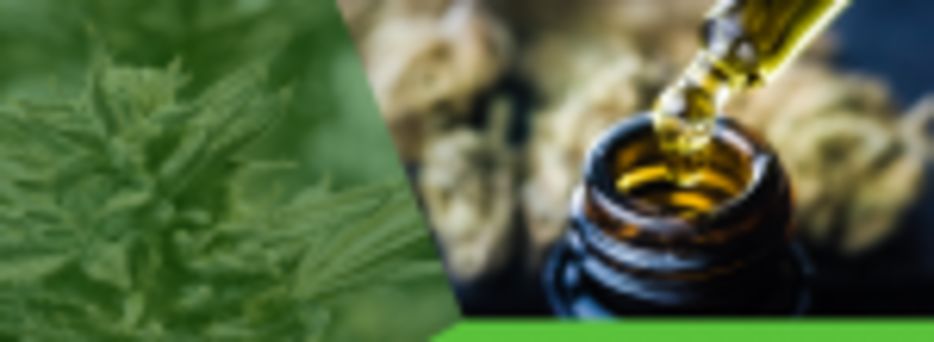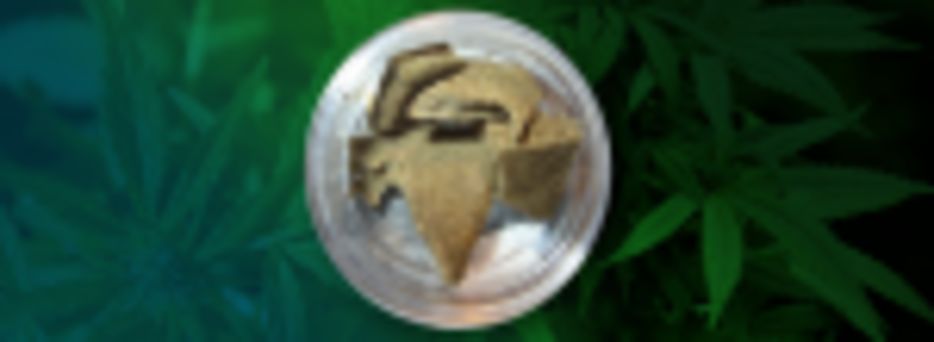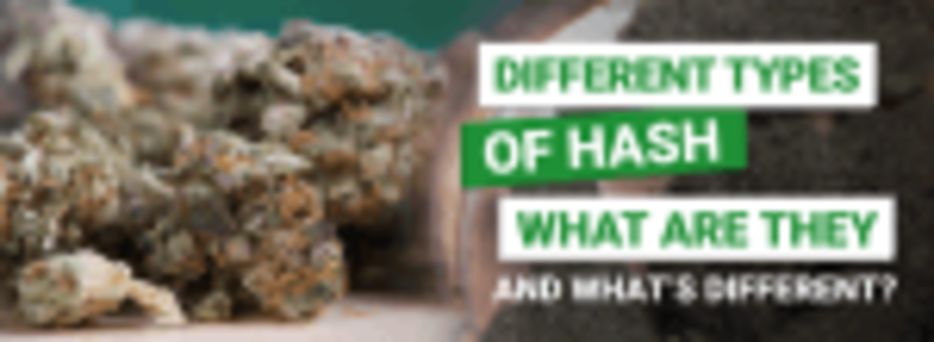Pressed, bubble, finger, oil – there are countless types of hash. “Hash” is an umbrella term for cannabis extracts – it takes many forms. The basic idea behind all hash is the same, though: extract plant matter from flowers, leaving nothing but trichomes.
Making extracts is a process that dates back more than 1,000 years. Since then, significant technological developments have appeared, spawning a new type of hash with different origins, texture, colour, and potency. Sometimes, all of these different genres of hash can be overwhelming. That’s why we’ve compiled a guide to the most popular types of hash here.
Kief / Pressed Hash

If you use a grinder to break up your weed, you might be familiar with keif. That sticky, powdery goop is one of the simplest types of hash to produce.
Kief (or “dry sift”) is made of trichomes, the small crystals that develop on the flowers of mature female cannabis plants. Because trichomes have the highest concentration of THC found anywhere in the weed plant, smoking kief will get you significantly higher than smoking flower.
When kief gets squeezed tightly together, it compresses into brittle slabs called “pressed hash.” You can do this yourself using a non-stick substance like tin foil or wax paper. This technique was first developed in Morocco and pressed hash is still known as Moroccan hash today.
Finger Hash
Finger hash is one of the oldest cannabis extracts in the world. It can be traced back to India and Nepal, where cannabis Indica plants grow in the wild. Finger hash has a thick texture like rich chocolate, and it sticks to anything.
Called “Chara” in local dialects, it’s produced by rubbing living cannabis flowers between one’s hands. After hours of rubbing, trichomes from the plant coat the producer’s hands in a tar-like substance. They scrape the resulting resin from their hands and form it into balls. Finger hash has also found its way into Jamaican culture, however, in Jamaica it’s produced using dead cannabis flower instead of living plants.
Bubble Hash
Bubble hash such as Bubble Hash Master Kush and Bubble Hash Rockstar is a much newer type of cannabis extract, appearing somewhere in the 1980s. Bubble hash can take a few different forms, but it usually appears as an amber-coloured goo, and it may sometimes have a grainy texture. Smoking bubble hash causes it to sizzle and “bubble,” giving the extract its name.
Bubble hash is produced by straining plant matter through bags with tiny holes in them. This essentially strains the trichomes from the plant matter, resulting in a higher concentration of cannabinoids. Bubble hash usually has a higher THC concentration than pressed hash or finger hash, usually between 30 and 60 percent.
For much of the late 20th century and into the 2000s, bubble hash was the most popular type of extract. Since then, concentrates like butane hash oil have taken centre stage. However, bubble hash is still a favourite of many smokers who prefer solvent-less extracts.
Rosin
Unlike finger hash and pressed hash, rosin doesn’t have a long-running history. Instead, rosin is one of the newest extracts available – it’s just been developed in the last decade.
Rosin is a sticky, golden-amber goop with a thick and viscous consistency. It’s produced by applying heat and pressure to cannabis buds and kief. Some intrepid extractors even make rosin out of bubble hash, which can rival the quality and potency of the best solvent-based extracts.
While most commercial rosin is produced using massive presses, you can make your own at home with a hair straightener. This process removes a significant amount of plant matter from the resulting extract, which gives rosin its distinct amber colour.
There are several ways to smoke rosin – you can put it in a bowl or bong, but for best results, you may want to consider a vaporizer. You can even dab high-quality rosin. That makes it attractive to anyone who’s looking for the best extracts without using any solvents.
Hash Oil

There is some debate as to whether hash oil is technically “hash.” There are some hash purists who say that hash oil isn’t in the same category as other forms of concentrates. However, the quality of the solvent-based concentrates is significantly higher than most solventless hash.
All of the other extracts we’re covered so far are solvent-less, meaning they’re produced with nothing but plant matter. Solvent-based extracts use a medium like ethanol or butane as a sort of chemical strainer, binding to cannabinoids and pulling it out of plant matter. The two most popular types of solvent-based extracts include distillates and butane hash oil (BHO).
Distillates
Cannabis distillate is one of the purest forms of THC you can find. Using a process called fractional distillation, extractors can create an oily, viscous substance that’s made up of nearly 99 percent THC. This is the same technique that many perfume companies use to create fragrances.
Distillates are some of the most powerful extracts on the market. However, they do suffer from one shortcoming. THC is just one cannabinoid out of the dozens that occur naturally in a cannabis plant. Without these other cannabinoids, the effects of smoking distillate will differ from other types of extracts.
Butane Hash Oil (BHO)
BHO is often touted as the “future of extracts.” There’s a reason for that. When made by a high-quality producer BHO offers the best smoking experience available. BHO is typically between 60 and 90 percent THC. It’s so pure that you can dab it, which results in a powerful high accompanied by skyrocketing euphoria.
Shatter, sap, wax, sugar – BHO comes in many different consistencies. Some BHO, like sauce, will come as pure THC crystals in a soup of terpenes cannabinoids. They’re all made using the same chemical process, but certain differences in variables like temperature and pressure will change the overall form of the final product.
Extracts are Excellent
Even after thousands of years of history, one thing is certain: today is the heyday of hash. There are constantly new types of extracts appearing, both solvent-less and solvent-based, and there’s something out there to fit anyone’s needs. To find the hash that’s best for you, check out our




